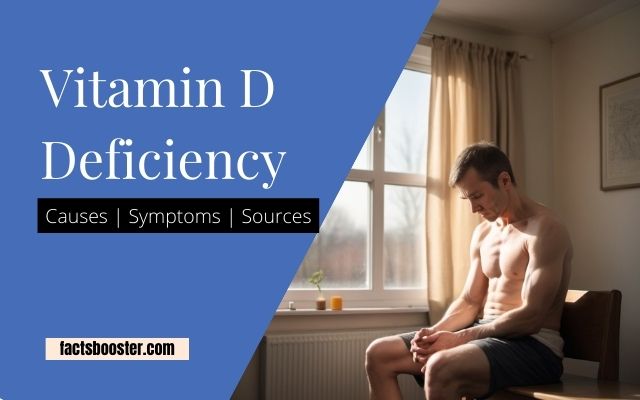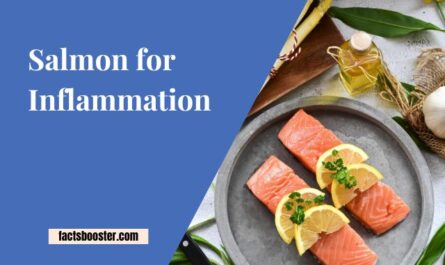Vitamin D deficiency has become a widespread concern, affecting numerous individuals across various age groups. This condition, pivotal for maintaining bone health, is often overlooked despite its potential to escalate into serious health complications.
In unfolding the layers of Vitamin D deficiency, this article delves into its causes, symptoms, and the heightened risks associated with low vitamin D levels. Moreover, it sheds light on natural sources and measures for improving vitamin D absorption and overall intake guidelines.
Key Takeaways:
- Understanding Vitamin D deficiency and its significant impact on health
- Identifying causes and symptoms to mitigate risks
- Strategies for boosting Vitamin D intake through diet and sun exposure

What is Vitamin D Deficiency
Vitamin D deficiency occurs when you have low Vitamin D levels, vital for bone health and overall well-being. It adversely affects bone density, leading to fragility, and undermines muscle strength, potentially causing weakness and fatigue.
This deficiency risks our bones and seeps into our musculoskeletal and immune system, compromising their function. Ensuring optimal Vitamin D intake, through sunlight, dietary sources, or supplements, becomes crucial.
It is indispensable in absorbing calcium, maintaining phosphorus levels in the blood, and supporting overall health.
Causes of Vitamin D Deficiency
Several culprits lead to low Vitamin D levels, a nutrient imperative for our well-being. Limited sunlight exposure tops this list, severely curtailing our body’s natural ability to synthesize this essential vitamin.
Moreover, our diets often fall short in providing enough of this nutrient, making dietary insufficiency a significant factor. Conditions that impair absorption or metabolism of Vitamin D, such as liver and kidney diseases, further complicate matters.
Lastly, certain medications can lower Vitamin D levels, making professional guidance a necessity for those affected. Understanding these causes is the first step in addressing Vitamin D deficiency risks and improving our overall health.
Inadequate sun exposure
Many of us find ourselves living lifestyles that significantly limit our exposure to sunlight. This behavior naturally leads to low Vitamin D levels, a condition alarmingly common in today’s society.
Geographic location plays a crucial role; for instance, individuals residing far from the equator may experience reduced sunlight exposure, especially during winter months. Compounding the issue, modern indoor-centric work and leisure habits further reduce the time we spend under the sun’s rays.
Consequently, these patterns contribute to the widespread Vitamin D deficiency risks, underscoring the urgency in finding solutions for increasing Vitamin D intake through natural sources or supplementation.
Read more:
Dietary insufficiency
A lack of dietary sources of Vitamin D has been pinpointed as a key contributor to deficiency levels. Many of us overlook the importance of incorporating foods rich in Vitamin D into our diets.
Milk, fatty fish, and egg yolks stand out as vital, natural sources of Vitamin D. Without these in our meals, our bodies miss out on this crucial nutrient, leading to lower Vitamin D levels. It underscores the pivotal role diet plays in preventing Vitamin D deficiency. (1)
Ensuring a balanced diet aids in maintaining adequate Vitamin D levels, safeguarding our overall health.
Absorption disorders
Some health conditions have shown they can impair absorption of Vitamin D significantly. Among these, Crohn’s disease and celiac disease stand out due to their effect on the gastrointestinal tract.
These disorders limit the body’s capacity to take in fats effectively, which is essential since Vitamin D is a fat-soluble vitamin. Hence, individuals with these conditions often face challenges in maintaining adequate Vitamin D levels.
Given the complexity of balancing Vitamin D intake and overall health, consultation with healthcare providers becomes crucial. They will guide on managing and improving Vitamin D absorption, tailoring advice to each unique case.
Liver and kidney diseases
These organs play a crucial role in the conversion process, vital for bone health and overall wellbeing. If I am suffering from conditions affecting these vital organs, my body may not manage Vitamin D properly, leading to deficiency risks.
Diseases within the liver or kidneys disrupt this delicate balance, necessitating a keen focus on monitoring and improving Vitamin D absorption to counteract the potential fallout on my health. (2)
Certain medications
These include, but are not limited to, anti-seizure drugs, glucocorticoids, and medications that affect the liver and kidneys. Each plays a role in diminishing the body’s ability to absorb or metabolize this vital nutrient. It’s essential to review these medications with healthcare providers.
They can offer insights or alternatives to mitigate risks. Ensuring adequate Vitamin D intake remains crucial for overall health. Hence, consulting professionals will guide you toward maintaining balanced levels, despite these pharmaceutical challenges. (3)
Symptoms of Vitamin D Deficiency
Vitamin D deficiency risks enveloping us into a myriad of distressing symptoms. Low Vitamin D levels have cast a shadow on many, unknowingly leading to unspoken discomforts.
Individuals might experience fatigue, making even simple tasks feel overwhelmingly exhausting. The deficiency does not stop there; bone pain and muscle weakness often whisper the early tales of this silent ailment.
- Fatigue
- Bone pain
- Muscle weakness
- Muscle aches or cramps
- Mood changes, such as depression
- Slow wound healing
- Hair loss
- Frequent infections
- Bone fractures
- Joint pain
These initial signs, if overlooked, may pave the way for more debilitating conditions such as bone fractures and joint pain, further emphasizing the necessity for early detection and management.
Recognizing these symptoms not merely serves as a preventive guard but also as a key to unlocking better health outcomes through timely intervention and increasing Vitamin D intake.
Who is at High Risk of Vitamin D Deficiency
Understanding who faces a heightened risk for Vitamin D deficiency forms a crucial part of preventing and promptly addressing this condition. Certain factors, deeply intertwined with our lifestyle, genetics, and environment, significantly elevate the risks.
- Older adults
- People with dark skin
- Individuals with limited sun exposure
- People living in northern latitudes
- Those with certain medical conditions (e.g., liver or kidney disease)
- Individuals who are obese or have undergone gastric bypass surgery
- People with malabsorption issues (e.g., Crohn’s disease, celiac disease)
- Infants who are exclusively breastfed
- Pregnant and breastfeeding women
- Individuals taking certain medications (e.g., anticonvulsants, glucocorticoids)
Grasping these nuances aids us in charting a course towards optimal health, empowering us to embrace strategies for increasing Vitamin D intake and, consequently, enhancing our wellbeing. This path towards prevention and early detection not only promises a bolster in our defense against deficiency but also steers us clear from the potential pitfalls linked to low Vitamin D levels.
Can Vitamin D deficiency be serious?
I understand your concerns. With low Vitamin D levels persisting, serious health consequences could unfold. Bone frailty, increased fracture risks, and profound fatigue can emerge, deeply impacting life quality.
These conditions remind us of the urgency to prioritize Vitamin D and overall health. For those pondering prevention, integrating natural sources of Vitamin D into daily routines offers a lifeline.
Whether by basking in sunlit spaces or favoring foods rich in this vital nutrient, proactive steps are within reach. Moreover, improving Vitamin D absorption through judicious diet choices or supplements underpins a solid strategy against deficiency.
I urge you not just to consider these guidelines but to act on them. Consulting healthcare providers for personalized advice ensures a path tailored to individual needs, safeguarding your well-being against the risks of Vitamin D deficiency.
The Best Sources of Vitamin D?
Sunlight has always been a crucial source for boosting Vitamin D levels, facilitating calcium absorption for stronger bones. Foods like salmon, eggs, and fortified milk also contribute to increasing intake naturally.
Instances arise, however, when supplementation becomes essential. Risk factors such as darker skin or residing in areas with low sunlight can hinder one’s ability to acquire sufficient amounts.
Here, I emphasize consulting healthcare providers to determine the need for and the correct dosage of supplements. A balanced approach integrates natural sources with judicious supplementation, ensuring overall health and preventing the risks associated with deficiency.
Conclusion
In concluding, we’ve navigated the complexities surrounding Vitamin D deficiency, highlighting its risks, symptoms, and measures for increasing Vitamin D intake through natural sources and supplements.
Emphasizing Vitamin D’s pivotal role in our overall health, I urge you not just to be aware of the deficiency guidelines but to actively seek ways for improving Vitamin D absorption.
It is paramount that you engage with healthcare providers, formulating a tailored approach that suits your unique needs. Remember, the journey towards optimal health demands a proactive stance on issues like low Vitamin D levels, ensuring a robust, vibrant life.


